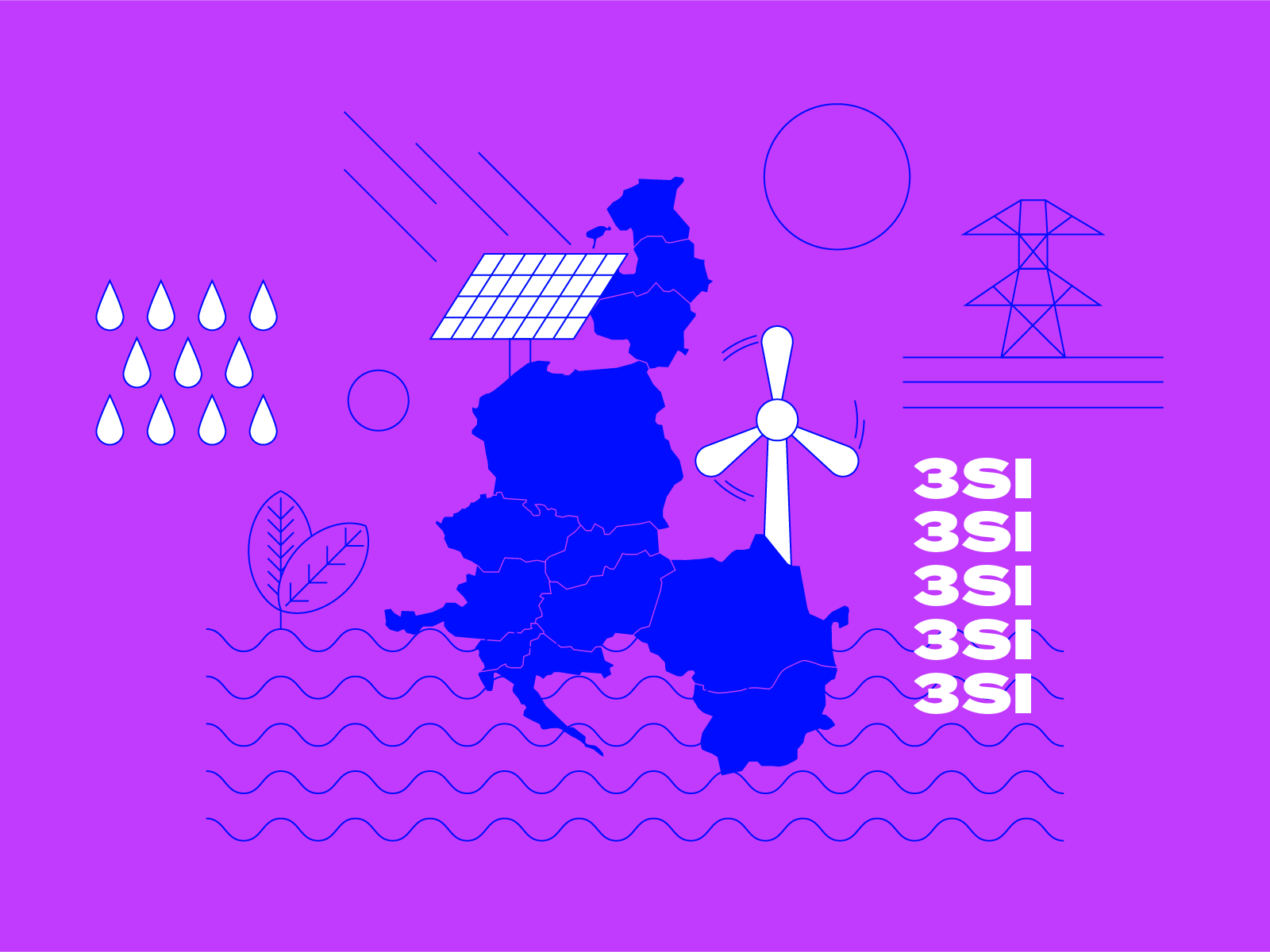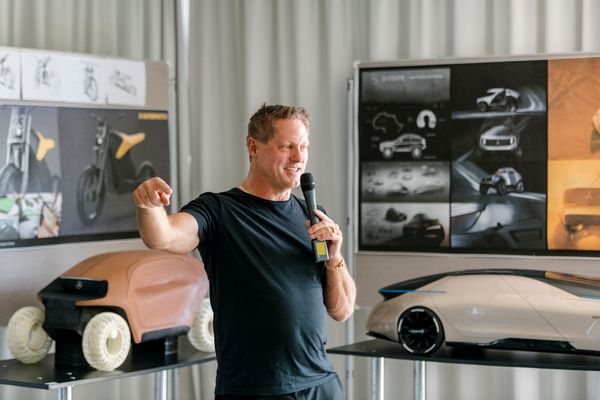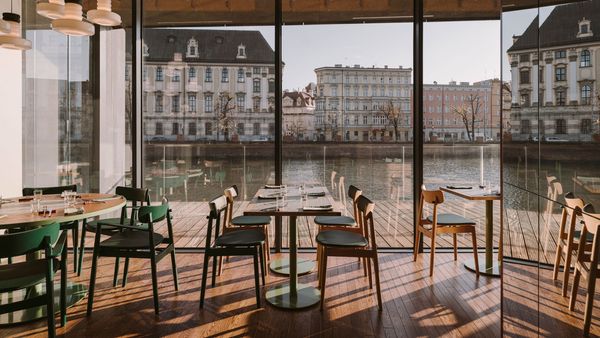The energy crisis is one of the most pressing issues in Central and Eastern Europe. How will we heat during the winter? Is energy independence possible, and if so, at what cost? Does Europe have to decide between building a turbine or a tank from its steel? These questions were discussed at the Three Seas Initiative Business Forum in Riga. Conference coverage from Hype&Hyper.
The Three Seas Initiative (TSI) is one of the most important regional economic organizations in Central and Eastern Europe. It covers 29% of the EU’s territory and 25% of its population, running along a north-south axis from the Baltic Sea to the Adriatic and Black Seas. It has twelve members: Austria, Bulgaria, Croatia, Czechia, Estonia, Hungary, Latvia, Lithuania, Poland, Romania, Slovakia, and Slovenia. The 2022 edition of the TSI’s summit was held in Riga, covering multiple issues from investment and innovation to digitalization, but perhaps the hottest topic was energy. Conference coverage of the energy panel discussion: „Building a Balanced and Resilient Energy Sector in the Three Seas Region.”
The panelists had different backgrounds, with representatives from the technology sector to investment funds. The first speaker was Joshua Volz, Deputy Assistant Secretary at the U.S. Department of Energy, a public sector representative. He believes energy transition has three key dimensions: decarbonization, diversification, and, most importantly, the deployment of new technologies. Aligning the existing infrastructures with different innovations can help us focus on passing on a cleaner planet to future generations even during the current crisis.
Ian Brown, Head of Baltics at the European Bank for Reconstruction and Development (EBRD), said that the war had changed the existing guidelines and policies of the EBRD. Before the Russian invasion, the focus was on issues such as climate neutrality and cutting fossil fuel production, but the Russo-Ukrainian war has shifted their attention. They mainly focus on liquefied natural gas (LNG) projects now, which can facilitate regional cooperation in the Baltics.
Gerald Koch, Shareholders’ Representative in the Investment Committee of the Three Seas Imitative Investment Fund, said that building and utilizing infrastructure and digital infrastructure is more crucial than ever. These steps are needed not just to tackle climate change but to achieve Europe’s energy independence. Koch thinks the new challenge should be seen as a construction project, with all its difficulties but maybe even more opportunities.
Uldis Bariss, Chairman of the Board of Conexus Baltic Grid, a Latvian natural gas transmission and storage operator, attended the conference too. He believes that besides long-term plans, today’s issues should also be addressed. The Baltic countries have been particularly exposed to Russian gas, so they had to make radical reforms when the war broke out. Lithuania has invested in an LNG terminal, Latvia has built an underground gas storage facility, and by the end of 2022, Estonia and Finland will also install LNG terminals, enabling the region to meet its energy needs from alternative sources. It is important to note that although it is indeed necessary and urgent to invest in renewable energy sources, we still need gas for the transition period.
Anna Łukaszewska-Trzeciakowska, CEO of ORLEN Neptun I, and CEO of BalticPower, two companies that construct a wind farm in the Baltic Sea, represents the technology sector in the discussion. Her companies will be ready to operate entirely from renewable energy sources by 2026 and pay attention to increasingly diversifying their portfolio to work not just with wind power but with a wide range of other technologies.

We associate Rolls-Royce with luxury cars, but they are also present in the energy market. Alastair Evans, Director of Government Relations and Corporate Affairs of Rolls-Royce SMR (Small Modular Reactor), noted that nuclear energy had not been mentioned in the discussion yet, though it is inevitable for reaching climate neutrality and must remain part of Europe’s energy structure. Evans believes nuclear energy is compatible with Europe’s energy goals, such as security of supply, stability, and sustainability.
An essential question for Europe’s energy future is how to store the different energy carriers. The underground gas storage facility of Conexus Baltic Grid may not be able to store more than one type of energy carrier. Still, Bariss believes it is not a problem since, due to the current crisis, they are now only focusing on the foreseeable future. Their primary goal is to create broad cooperation in the Baltic region by abolishing duty on energy and implementing further refinements on the integration of the systems to make the region finally energy independent.
The COVID-19 pandemic and then the Russo-Ukrainian war resulted in a supply chain slowdown. Brown said that from the bankers’ perspective, one of the main challenges is that there are very few projects they can back. There are not enough options as obstacles such as land transport, inflation, overcrowded ports, fewer operating ships, or obtaining licenses make survival harder for renewable energy companies. Koch agreed with Brown and noted that the procurement and transport of steel, concrete, and electronic components have been pretty chaotic in recent years. Moreover, due to the Russo-Ukrainian war, Europe must now decide between building a turbine or a tank from the available steel, which is a difficult task. Therefore, he believes that, unfortunately, the current dire situation cannot be solved with more money; we simply must wait.
The same problem occurs when building wind turbines. Europe has an upper limit regarding available warehouses and ships, for instance. More vessels are needed to speed up the transport of raw materials, but the port cranes are also utilized to their maximum. So, the bottlenecks in the transport process of raw materials would not improve that much with more watercraft.
Energy supply is a complex, multi-stakeholder process. It is a bit like an orchestra, where each musical instrument has its own unique and irreplaceable role. But who is the conductor? Evans believes that the involved parties’ equality would be more important; thus, he would shift the energy industry from the public sector to the private sector to a greater extent. Nuclear power plants are mainly built with public funding now, but Rolls-Royce SMR would change that. Łukaszewska-Trzeciakowska did not answer the question regarding the conductor of the energy industry either. She believes that cooperation is vital at all levels of the industry; for her, the energy crisis is a jigsaw puzzle that can only be completed if all the pieces are in their place. Thus, she also highlighted that all players should be equally important. The energy industry will never be independent of politics. The question of the future is whether we can control the energy crisis or will it control us. The discovery of oil’s importance has created a massive financial inequality between countries. Renewable energy sources might mitigate the differences, but there will still be winners and losers as sunshine duration varies between countries and the wind does not blow everywhere either. Energy independence is crucial for Europe, so the countries with higher renewable energy capacity must support the less lucky regions. Moreover, the road to decarbonization is not a single pathway; only several parallel systems could grant it. Therefore, the energy industry’s whole orchestra must work together to make Europe more sustainable, greener, and independent.

MOME’s new vehicle design studio, the Mobility Design Lab, has been inaugurated | Interview about the past and future of vehicle design II.

Portugal’s flavors and colors in a restaurant in Wrocław | MARTIM










